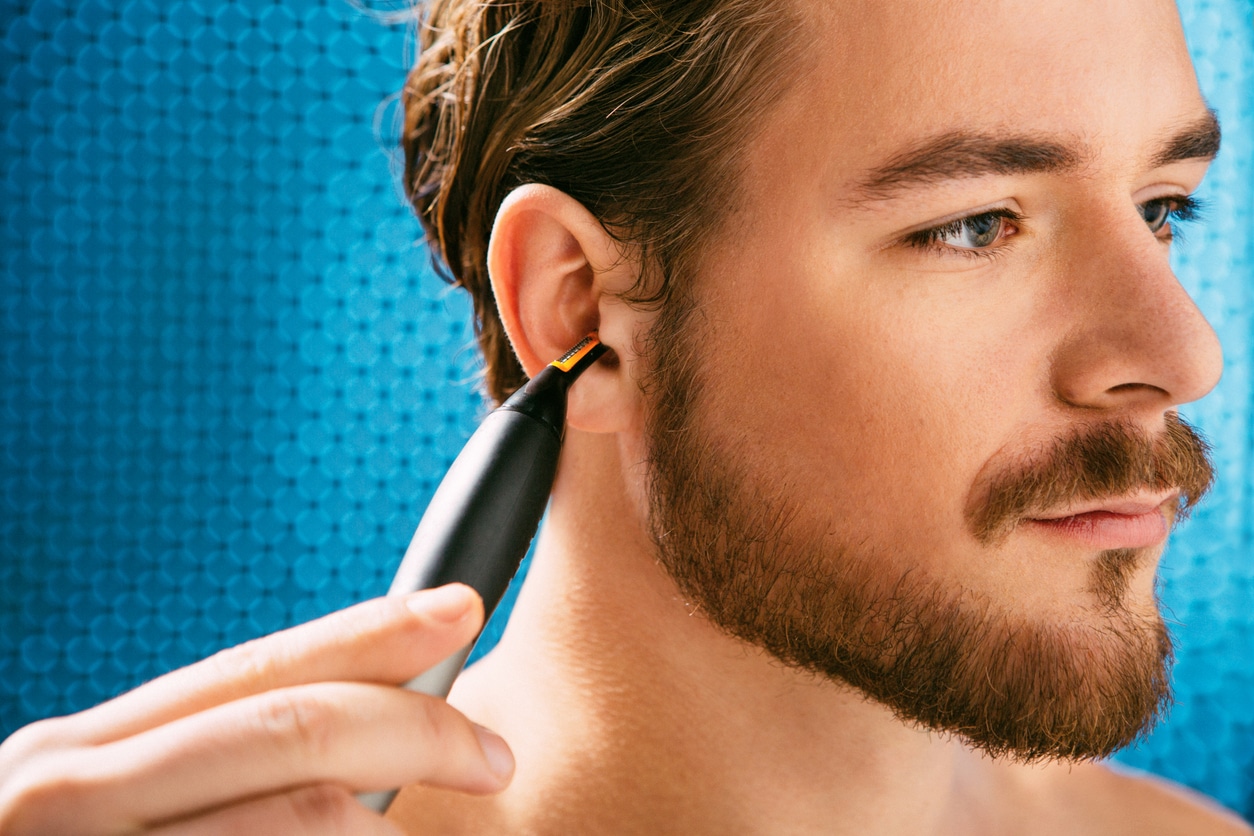Ear hair is helpful for protecting your inner ear from debris. As you age, you may develop a lot of ear hair you haven’t noticed before. It is luckily harmless and can easily be removed.
Types of Ear Hairs

Ear hairs, along with ear wax provide a natural barrier for protection.
There are two types of ear hair: vellus and terminal (tragi).
Vellus hair is the peach-fuzz hair covering the ear. It assists with regulating body temperature and develops in childhood. It’s light in color and barely noticeable.
Tragi hairs are the thicker, darker hairs. These hairs provide additional protection and can grow out of the ear in tufts.
What Can I Do About Ear Hair?
Most ear hair is not a cause for worry and is generally a cosmetic issue. There is usually no medical need for removing ear hair, but if you’re self-conscious about how it looks, you may not have to wait until your next appointment at Boulevard Barber Shop to have it removed.
Processes for removing ear hair:
- Depilation: removing hair at the shaft, or the part of the hair you see
- Epilation: removing the shaft, follicle and bulb. Waxing is a form of epilation.
Within the processes for removing ear hair there are different ways to remove it, some of which can be done at home.
Self-hair removal tactics:
- Laser hair removal
- Threading
- Sugaring
- Waxing
- Shaving/trimming
- Tweezing
Having excess ear hair may increase your risk for developing otitis externa, or Swimmer’s Ear, by narrowing the ear canal and trapping water inside. However, the issue is typically minor and can be prevented by drying ears thoroughly after activities like swimming and showering.
Anyone can develop excess ear hair, but it is most common among adult or older men. If you’re concerned about your ear hair, it’s always a good idea to talk to your doctor.
For more information about ear hair or to get your hearing checked contact Nevada Ear + Sinus Institute.
Call Nevada Ear + Sinus Institute at (702) 735-7668 for more information or to schedule an appointment.